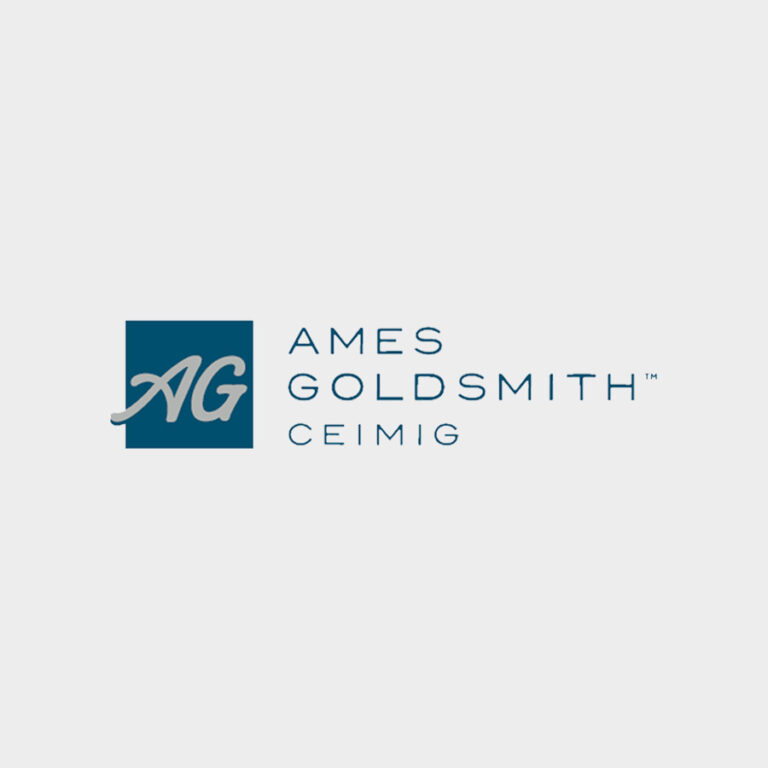Getting society to net-zero carbon emissions by 2050 requires a lot of developments in various stages. Upstream, a considerable amount of wind, solar and other green energy capacity will have to be rolled out.
Electricity grids will also have to go through an upgrade to facilitate the transition from molecules to electrons. And downstream industries are set to witness big transformations.
A significant amount of additional raw materials will be required to facilitate this transition, creating opportunities for companies such as Ames Goldsmith Ceimig.
The polymer electrolyte membrane (PEM) electrolysis technology division of the Ames Goldsmith Corporation, a multinational precious metal chemistry specialist, Dundee-based Ames Goldsmith Ceimig has been a champion of low-iridium catalysts for PEM technology for over 15 years.
Over the last two years it has scaled up production of its iridium catalysts to more than 500 kilos per annum in support of a rapidly growing customer base. This level of production is enough to supply iridium-based catalysts for well over a gigawatt of electrolyser manufacturing per year.
The company has committed to further ramp up production in line with this rapidly growing market.
There are ambitious targets globally for electrolyser production, with an estimated 100GW needing to be installed by 2030, increasing to an estimated 3,585GW of electrolysis by 2050.
Of this, 40% will use PEM technology, equating to 40GW of PEM electrolysis by 2030 and 1,434GW by 2050. In Europe there is currently 1.75GW of electrolyser manufacturing capacity per annum.
A recent joint declaration saw a commitment to increase this to 17.5GW a year by 2025, and further from 2030.
Based on the current use of iridium, this seems like an impossible task—but the companies involved in the supply chain for PEM technology are aware of this issue and are taking steps to address it through chemistry and equipment design.
Ames Goldsmith Ceimig’s range of water electrolyser products, HyPer® WE, comprises of both iridium and platinum catalysts tailored for use on the anode or cathode of the PEM electrolyser.
Whilst many companies still utilise iridium black, which is more than 98% iridium, as the anode catalyst, Ceimig customers benefit from lower iridium loadings on the anode by using high surface area catalysts such as HyPer WE530 and HyPer WE550.
HyPer WE550 offers an alternative to high iridium-content catalysts, with an iridium content of less than 70%. This is often used at loadings lower than 2mg/cm2 (less than 1.4g of iridium per cm2) of total catalyst.
Testing and field experience show that HyPer WE550 improves the durability of the iridium in use, extending the life of the electrolyser. HyPer WE550 is manufactured at scale and has been used in the field for over 10 years in projects of more than 10MW.
“Due to our commitment to PEM technology and our investment in the adoption of this crucial tool in the battle against climate change, we have developed next-generation supported iridium grades with significantly reduced iridium contents,” says Wayne Thornhill, sales manager.
“Working with our industrial partners these candidate grades are on long-term accelerated stress tests and show great promise. Several candidate grades are showing good levels of performance whilst potentially offering over a five-fold reduction in iridium requirement.”
Deposition of iridium and iridium alloys on the supports shows a uniform covering of nanocrystals, optimising the catalytic performance of the metal and increasing the efficiency of its use.
Due to the harsh environment at the anode of the PEM electrolyser membrane electrode assembly, the selection of the support material is key. The support must be electrically conductive and stable at low pH and highly oxidising potentials.
The use of a non-conductive supports, such as TiO2, can offer a reduction in precious metal in the short term but this will not sufficiently reduce iridium usage to ensure the long-term viability of the technology.
There is a high conductivity requirement for the catalyst layer and, when using a non-conductive support, it is only the iridium loaded on the surface that allows the flow of electricity.
Therefore, the iridium must be loaded on the support at a high enough level.
The approach being taken by Ames Goldsmith Ceimig and its industrial partners will leapfrog this step leading to significantly lower iridium loadings which the company says will future proof the technology for 2050 levels of production.
In addition to the investment in production and development of next-generation catalysts, Ames Goldsmith Ceimig has invested heavily in electrochemical testing equipment. This testing capability has been crucial in the development of new products.
Iridium is one of the rarest minerals on the planet, so reductions in loading are required to enable the wider adoption PEM technology. Reduction of the iridium content will also reduce the initial cost of equipment and increase the cost competitiveness of PEM against other electrolysis methods.
Another crucial step in securing the long-term viability of this technology is in establishing improved recycling loops for iridium. Current recycling loops involve burning Nafion membranes so the precious metal can be recovered in a solid form.
Iridium is used in PEM technology because it is hard to dissolve, therefore recycling to pure metal is not ideal for further use in electrolysis.
Additionally, the burning of fluorinated polymers does not sit well with the green credentials of this technology.
Ames Goldsmith Ceimig is therefore investing in technology to remove and recover Nafion for reuse in future PEM equipment. This process will also readily return iridium and other platinum group metals in salt form for easy conversion back into catalysts.
In addition to the work being done on iridium reduction, Ames Goldsmith Ceimig has also scaled up the production of platinum-based catalysts for use in water electrolysers and fuel cells.
“Using the latest in carbon support technology and a new deposition technique for platinum, our HyPer WE and HyPer fuel cell grades offer superior electrochemical performance and increased durability,” says Thornhill.



